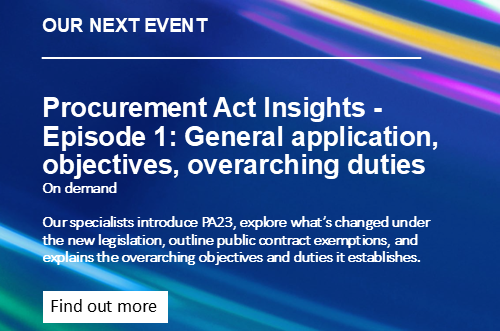- Details
Parish council succeeds in Court of Appeal ‘Bridge to Nowhere’ dispute
![]() Alastair Lewis and Tiah Weekes analyse the recent case of R (on the application of Ashchurch Rural Parish Council) v Tewkesbury BC [2023] EWCA Civ 101.
Alastair Lewis and Tiah Weekes analyse the recent case of R (on the application of Ashchurch Rural Parish Council) v Tewkesbury BC [2023] EWCA Civ 101.
What was the relevant background?
This case was an appeal against the High Court decision of Lane J (“the Trial Judge”) to dismiss the claim by the Appellant (“ARPC”) for judicial review of the decision of the Respondent’s (“TBC”) Planning Committee to grant planning permission for development of a road bridge over the Bristol to Birmingham mainline railway north of Ashchurch, Tewkesbury.
The bridge was intended to facilitate, and was essential to, the development of a proposed new “garden town” of up to 10,195 new homes, to be delivered in phases, as well as the delivery of 46 ha of new employment land, a local centre with retail services, a new primary school and a new Green Infrastructure corridor. The proposals for the garden town were set out in the Tewkesbury Area Draft Concept Masterplan Report (“the Masterplan”). As the Masterplan was not a development plan, the proposal was to be included in the Joint Core Strategy for the area, due to be submitted in 2023. Therefore, when planning permission for the bridge was sought in 2020, the garden town was not supported by any development plan policy.
TBC’s Planning Committee granted planning permission for the bridge on 22 April 2021. ARPC then sought judicial review of the decision in the High Court where their claim was dismissed. Consequently, ARPC appealed to the Court of Appeal.
ARPC raised three grounds of appeal. Ground 1 was that the Trial Judge erred in his interpretation of the Officer’s Report (“the Report”). Ground 2 was that the Trial Judge fell into error in his application of the principle in R (Samuel Smith Old Brewery) v North Yorkshire CC [2020] UKSC 3. Ground 3 was that the Trial Judge erred in his consideration of whether TBC unlawfully considered that the “project” for the purposes of the Town and Country Planning (Environmental Impact Assessment) Regulations 2017 (“the EIA Regulations”) was the subject-matter of the planning application itself, i.e., the bridge, looked at in isolation from the garden town.
What did the court decide?
The appeal was successful all three grounds, the decision of the Planning Committee quashed and the application remitted to TBC for reconsideration for the reasons described below.
On discussion of grounds 1 and 2, the Court highlighted that a planning officer’s report serves two main purposes: providing information to the decision maker and making a recommendation as to how they should deal with the planning application. It was made clear it must not be construed as if it were a statute, but approached from the perspective of how it would be understood by those for whose benefit it is prepared and read with “reasonable benevolence” as per R (Mansell) v Tonbridge & Malling Borough Council [2017].
The Court held that ground 1 was founded upon a rationality challenge to the approach adopted in the Report which, on ARPC’s case, treated certain identified benefits as material, but left out of consideration the concomitant harms. The Trial Judge rejected APRC’s submission on the basis that on an appropriately benevolent reading of the Report, the benefits that were being considered were not the benefits of any future development that the bridge was enabling, but rather, the benefits of granting permission for the construction of the bridge at that time, instead of waiting for proposals for the wider development to be brought forward. The Court held that in finding this, the Trial Judge misinterpreted the Report. The Court observed that the question of timing was undoubtedly one matter which the Report addressed, but the public benefits to which the planning officer referred were not confined to the benefits of allowing the bridge to be built in advance of the rest of phase 1.
Ground 2 related to the principle in the Samuel Smith case which is that if something is capable of being regarded as relevant to the decision on a planning application, but the planning authority does not take it into account, their decision can only be challenged on an irrationality basis, i.e. on the basis that that factor was “so obviously material” that no reasonable decision-maker could have failed to consider it. The Court held that the Trial Judge erred in considering that this principle was applicable, because the principle arises when the decision-maker has itself determined whether a factor is material or not, and thereby exercised an unfettered discretion to leave something out of consideration. That was not what happened here. The effect of the instruction given in the Report that the harms should not be taken into account was the skewed approach complained of in ground 1; the decision maker could not rationally treat the benefits of the development facilitated by the bridge as material without also treating the harms of the development as material. The direction by the Planning Officer could equally be characterised as a misdirection in law.
On ground 3, the Court held that TBC did not take the correct approach to the decision as to whether an EIA assessment was required when carrying out its screening assessment. This hinged on whether the “project” was just the bridge in isolation or also included the wider development which it was to serve. The Court held that TBC approached the question incorrectly. The wider project should have been taken into account – it didn’t matter that no planning application for the garden town had yet been made or that an EIA for the garden town would eventually be required. Another key factor was that the only purpose of widening the bridge was to serve the garden town.
What are the practical implications of this case?
The case confirms that advice from a Planning Officer, whether given in a report or orally, can have the effect of fettering the discretion of a Planning Committee. In determining whether it has had this effect, the advice given will be approached with “reasonable benevolence”. The case highlights that Planning Officers should take care when advising decision makers what matters should or should not be taken into account where they are providing advice on matters of discretion.
Importantly, this case provides further guidance on the correct approach to EIA screening in “salami slicing” cases, where a particular proposal forms part of wider development. In particular, it emphasises that even where there is uncertainty about the scale and nature of the wider project, that does not mean the wider project shouldn’t be taken into account for the purposes of screening enabling development. The decision maker can take account of the wider project and take into account any inherent uncertainties in the analysis. It is important to note that the Court also considered it irrelevant that the wider project did not have any formal planning status, and that it may be subject to EIA assessments in the future.
Alastair Lewis is a Partner and Parliamentary Agent and Tiah Weekes is a Trainee Solicitor at Sharpe Pritchard LLP.
How we can help
Sharpe Pritchard’s planning and infrastructure team acts for developers and planning authorities on the full range of planning applications. We also advise promoters and opponents of infrastructure projects of all types, including Nationally Significant Infrastructure Projects (DCOs), Transport and Works Orders and harbour orders. We advise on environmental impact assessment and habitats across all development proposals. Contact Bernadette Hillman or Alastair Lewis.
For further insight and resources on local government legal issues from Sharpe Pritchard, please visit the SharpeEdge page by clicking on the banner below.
This article is for general awareness only and does not constitute legal or professional advice. The law may have changed since this page was first published. If you would like further advice and assistance in relation to any issue raised in this article, please contact us by telephone or email
|
Click here to view our archived articles or search below.
|
|
ABOUT SHARPE PRITCHARD
We are a national firm of public law specialists, serving local authorities, other public sector organisations and registered social landlords, as well as commercial clients and the third sector. Our team advises on a wide range of public law matters, spanning electoral law, procurement, construction, infrastructure, data protection and information law, planning and dispute resolution, to name a few key specialisms. All public sector organisations have a route to instruct us through the various frameworks we are appointed to. To find out more about our services, please click here.
|
|
OUR RECENT ARTICLES
December 10, 2025
Sharpe Pritchard appointed to £60m London Boroughs’ Legal Alliance frameworkSharpe Pritchard, one of the UK’s leading public law firms, has been re-appointed to the London Boroughs’ Legal Alliance (LBLA) Solicitors Panel.
November 20, 2025
Strengthening the standards and conduct framework for local authorities in EnglandJames Berry offers his insight into how the proposed changes to standards and conduct rules will affect local authorities.
November 04, 2025
Procuring and operating open frameworks under the Procurement Act 2023Chantelle Pink offers advice to authorities on open frameworks and how to procure them.
October 31, 2025
Building Solar – 5 Top Tips for Solar Farm Construction ContractsSolar farm construction contracts are in focus following fascinating insights into the continuing global uptake and expansion of renewables, and particularly solar, within the 2025 mid-year report of Ember, a global energy think tank.
|
|
OUR KEY LOCAL GOVERNMENT CONTACTS
|
||
|
Partner 020 7406 4600 Find out more |
||
|
Partner 020 7406 4600 Find out more |
||
|
Rachel Murray-Smith Partner 020 7406 4600 Find out more |







 Catherine Newman
Catherine Newman
